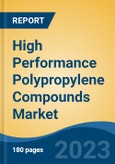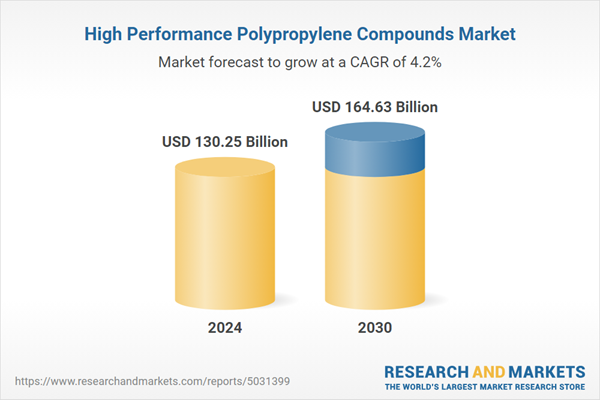Speak directly to the analyst to clarify any post sales queries you may have.
10% Free customizationThis report comes with 10% free customization, enabling you to add data that meets your specific business needs.
In the automotive industry, these compounds are instrumental in supporting vehicle lightweighting initiatives, enhancing fuel efficiency, and enabling compliance with stringent emission regulations. Common applications include interior trims, bumpers, under-the-hood components, and structural parts.
Beyond automotive, high-performance PP compounds are extensively used in consumer goods, including home appliances, electronic housings, and furniture, due to their excellent balance of strength, aesthetics, and processability. In packaging and healthcare, demand is being propelled by the need for regulatory-compliant, high-functionality materials, particularly for food-grade packaging and medical devices.
Key Market Drivers
Increasing Adoption in the Construction Industry
The construction sector is emerging as a critical driver of growth in the high-performance PP compounds market. These materials are being increasingly utilized in construction applications due to their durability, lightweight properties, and resistance to chemicals and environmental stress. Common uses include piping systems, insulation materials, wall panels, and protective barriers, where long-term performance and low maintenance are key considerations.According to Oxford Economics, global construction output is projected to grow from USD 9.7 trillion in 2022 to USD 13.9 trillion by 2037, with China, the United States, and India accounting for a significant share of this expansion. China’s recovery post-2025, India’s rapid infrastructure development, and the UK’s leadership in Western Europe are expected to fuel this growth.
As emerging markets invest heavily in infrastructure, there is increasing demand for high-performance, cost-efficient materials that support energy efficiency and sustainability goals. High-performance PP compounds address these evolving needs, making them a preferred choice in modern, environmentally conscious construction projects. Their adaptability and superior performance characteristics are expected to accelerate adoption across a broad spectrum of building applications.
Key Market Challenges
Adhesion and Bonding Complexities
A key technical challenge facing the high-performance PP compounds market lies in the complexity of adhesion and bonding. Due to their inherently low surface energy, PP compounds present difficulties when bonding with dissimilar materials, especially in multi-material assemblies.Successful bonding often requires specialized adhesive formulations capable of adhering to low-energy surfaces. Moreover, surface treatments - such as plasma, corona discharge, or chemical priming - are frequently necessary to modify surface characteristics and improve adhesion performance.
The selection of adhesives - ranging from epoxy and acrylic to polyurethane-based systems - must be aligned with specific performance requirements, environmental conditions, and intended use. These complexities demand a deep understanding of material science and precise process control, making adhesion and bonding a critical area of innovation and investment for manufacturers.
Key Market Trends
Rising Demand for Sustainable and Recyclable Solutions
Sustainability has become a strategic imperative across industries, driving demand for eco-friendly, recyclable, and bio-based materials. In the high-performance PP compounds market, this has catalyzed a shift toward non-phthalate, circular-economy-compliant formulations that maintain mechanical integrity and processing efficiency.Manufacturers are increasingly focusing on sustainable innovation to meet both regulatory requirements and corporate ESG objectives. A notable example is Eppendorf’s launch of twin.tec Trace Plates in April 2024 - automation-compatible PCR plates made using bio-based materials. These 96-well plates feature ultra-thin wells composed of 100% biobased polypropylene, paired with a rigid frame made from 77% biobased polycarbonate. Produced from second-generation renewable feedstock and ISCC PLUS-certified, these products are also ACT-certified for sustainability.
This trend reflects broader market dynamics, with sectors such as automotive, consumer goods, and packaging adopting sustainable PP compounds to reduce carbon footprint, meet regulatory standards, and improve end-of-life recyclability.
Key Market Players
- Borealis AG
- SABIC
- Mitsubishi Chemicals Corporation
- Sumitomo Chemical Company, Limited
- LyondellBasell Industries NV
- A Schulman Inc Ltd
- Exxon Mobil Corp
- Sirmax S.p.A.
- Polyone Technology Co Ltd.
- Mitsui Chemicals Inc.
Report Scope:
In this report, the Global High Performance Polypropylene Compounds Market has been segmented into the following categories, in addition to the industry trends which have also been detailed below:High Performance Polypropylene Compounds Market, By Type:
- Mineral Reinforced
- Glass Reinforced
- Rubber Modified
- Flame Retardant
- Others
High Performance Polypropylene Compounds Market, By Application:
- Bumper
- Instrument Panels
- Side Panels
- Thermoformed Containers
- Others
High Performance Polypropylene Compounds Market, By Region:
- North America
- United States
- Canada
- Mexico
- Europe
- France
- United Kingdom
- Italy
- Germany
- Spain
- Asia-Pacific
- China
- India
- Japan
- Australia
- South Korea
- South America
- Brazil
- Argentina
- Colombia
- Middle East & Africa
- South Africa
- Saudi Arabia
- UAE
- Egypt
Competitive Landscape
Company Profiles: Detailed analysis of the major companies present in the Global High Performance Polypropylene Compounds Market.Available Customizations:
With the given market data, the publisher offers customizations according to a company's specific needs. The following customization options are available for the report.Company Information
- Detailed analysis and profiling of additional market players (up to five).
This product will be delivered within 1-3 business days.
Table of Contents
Companies Mentioned
- Borealis AG
- SABIC
- Mitsubishi Chemicals Corporation
- Sumitomo Chemical Company, Limited
- LyondellBasell Industries NV
- A Schulman Inc Ltd
- Exxon Mobil Corp
- Sirmax S.p.A.
- Polyone Technology Co Ltd.
- Mitsui Chemicals Inc.
Table Information
| Report Attribute | Details |
|---|---|
| No. of Pages | 185 |
| Published | April 2025 |
| Forecast Period | 2024 - 2030 |
| Estimated Market Value ( USD | $ 130.25 Billion |
| Forecasted Market Value ( USD | $ 164.63 Billion |
| Compound Annual Growth Rate | 4.1% |
| Regions Covered | Global |
| No. of Companies Mentioned | 10 |









